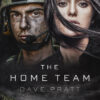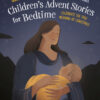Hi! I’m Kathy Ide. In addition to being a published author, I’m a full-time
professional freelance editor. For CAN, I’m blogging about "PUGS"–Punctuation, Usage, Grammar, and Spelling…tips for writers based on the most common mistakes I see in the manuscripts I edit. Each blog
post will have one tip for each of the four categories. (For more PUGS tips, check out my website, or get a copy of my book Polishing the PUGS (available through the website or at the conferences where I teach). If you’re interested in working with a freelance editor (or know someone who is), e-mail me through the contact page of my website. Or go to the Christian Editor Network to get referrals to other established, professional editorial freelancers. If you’re a freelance editor yourself, or think you might be interested in that field, check out The Christian PEN: Proofreaders and Editors
Network.
PUNCTUATION TIP
Replacing Omitted Letters
An apostrophe replaces omitted letters in a word. Examples:
readin’ and writin’
’tis the season
rock ’n’ roll
ne’er-do-well
NOTE: If you’re using “curly quotes,” make sure the apostrophes (and single quotation marks) are curled in the right direction. Examples:
’tis, not ‘tis
USAGE TIP
best seller/best-selling
best seller
(noun): a book that has sold more copies than most
best-selling (adjective):
having sold more copies than most
NOTE: Never one word, bestseller
GRAMMAR TIP
Most of the time, the subject pronoun of a phrase or sentence refers to the subject noun of the previous phrase or sentence, while the object pronoun refers to the object noun.
Example: “Stephanie told Nancy about the book signing. Then she told her about the potluck.”
“She” refers to Stephanie (subject), and “her” refers to Nancy (object).
This rule of thumb does not apply if the identity of the pronoun is obvious.
Example: “Wanda told Daniel she wouldn’t eat caviar. He told her he never ate shellfish.”
SPELLING TIP
CAT scan
(all-caps CAT, acronym for Computerized Axial Tomography)


